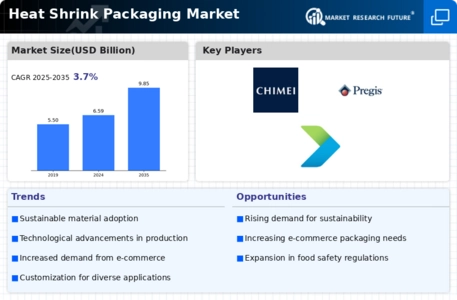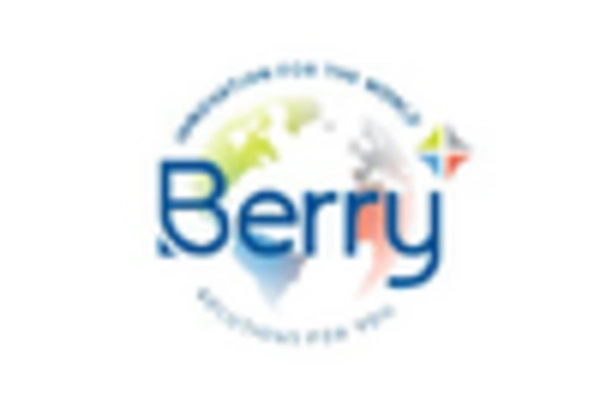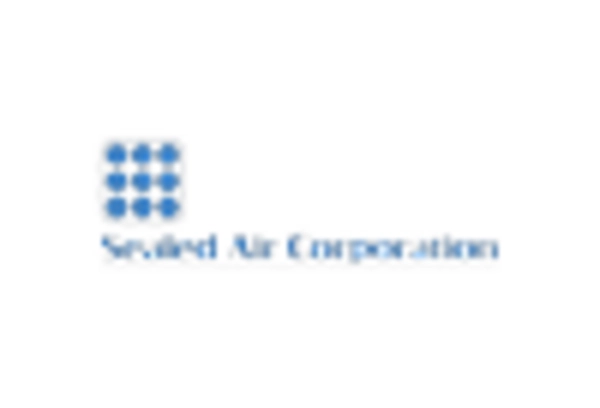The Heat Shrink Packaging Market is currently characterized by a dynamic competitive landscape, driven by increasing demand for sustainable packaging solutions and the need for enhanced product protection. Key players such as Sealed Air Corporation (US), Amcor plc (GB), and Berry Global Inc. (US) are strategically positioned to leverage innovation and operational efficiency. Sealed Air Corporation (US) focuses on developing advanced materials that enhance product visibility and shelf life, while Amcor plc (GB) emphasizes sustainability through its commitment to recyclable and biodegradable packaging solutions. Berry Global Inc. (US) is actively pursuing regional expansion, particularly in emerging markets, to capitalize on the growing demand for heat shrink packaging across various sectors, including food and beverage, pharmaceuticals, and consumer goods. Collectively, these strategies contribute to a competitive environment that prioritizes innovation and sustainability.
In terms of business tactics, companies are increasingly localizing manufacturing to reduce lead times and optimize supply chains. This approach not only enhances operational efficiency but also allows for greater responsiveness to regional market demands. The competitive structure of the Heat Shrink Packaging Market appears moderately fragmented, with several key players exerting influence while also facing competition from smaller, specialized firms. The collective actions of these major companies shape market dynamics, as they strive to differentiate themselves through unique value propositions.
In August 2025, Sealed Air Corporation (US) announced the launch of its new line of eco-friendly heat shrink films, which are designed to reduce plastic waste while maintaining product integrity. This strategic move underscores the company's commitment to sustainability and positions it favorably in a market increasingly driven by environmental considerations. The introduction of these films is likely to attract environmentally conscious consumers and businesses, thereby enhancing Sealed Air's market share.
In September 2025, Amcor plc (GB) entered into a partnership with a leading beverage manufacturer to develop customized heat shrink packaging solutions that enhance brand visibility and consumer engagement. This collaboration not only showcases Amcor's innovative capabilities but also reflects a broader trend of companies seeking to differentiate their products through unique packaging designs. Such partnerships may prove crucial in capturing market attention and driving sales in a competitive landscape.
In July 2025, Berry Global Inc. (US) expanded its manufacturing capabilities in Southeast Asia by acquiring a local packaging firm. This acquisition is indicative of Berry's strategy to strengthen its presence in high-growth regions and respond to the increasing demand for heat shrink packaging in Asia. By enhancing its production capacity, Berry is likely to improve its supply chain efficiency and better serve its customers in this burgeoning market.
As of October 2025, the Heat Shrink Packaging Market is witnessing trends that emphasize digitalization, sustainability, and the integration of artificial intelligence in production processes. Strategic alliances are becoming increasingly prevalent, as companies recognize the value of collaboration in driving innovation and enhancing operational capabilities. Looking ahead, competitive differentiation is expected to evolve, with a shift from price-based competition to a focus on technological advancements, sustainable practices, and reliable supply chains. This transition may redefine how companies position themselves in the market, ultimately leading to a more resilient and innovative industry.


















Leave a Comment